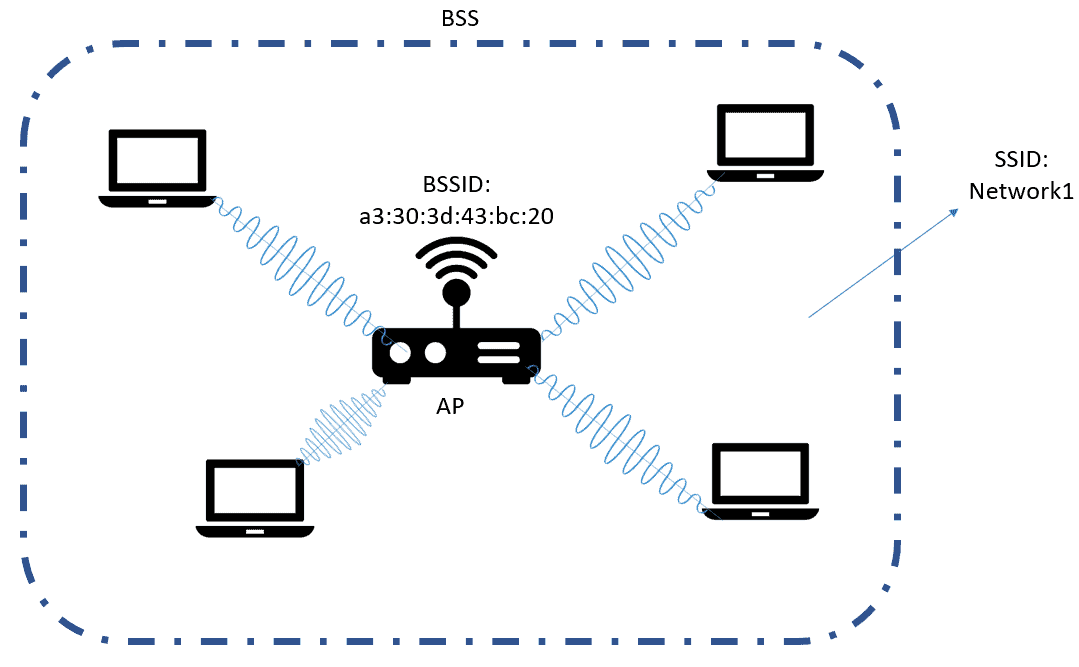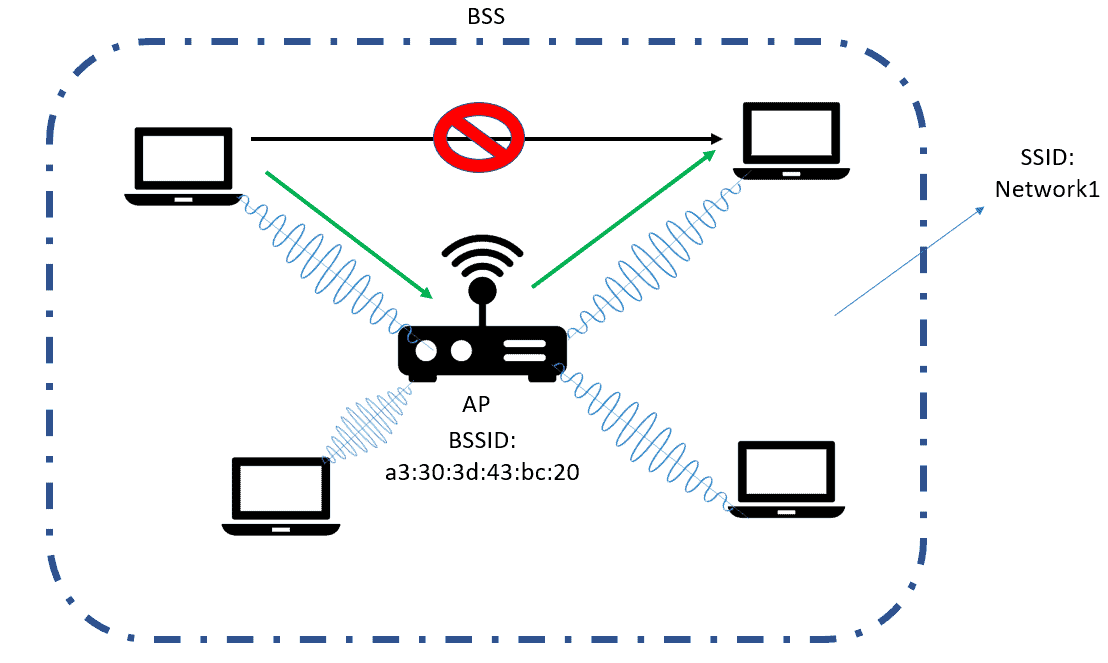Establishing a wireless network has its pros and cons. One of the downsides is that at the most introductory position, there’s no governing association that regulates free space or indeed controls the number of devices that can transmit and admit frames via a wireless medium which is a serious security concern.
Suppose the device that has a wireless network adapter can power up at any time and try to communicate. A wireless network should at least have a way to ensure that every device that uses a channel can support a common set of parameters. Moreover, there should be a way to control which devices or clients can use the wireless medium and the technique that are used to secure the wireless transmissions.
To solve this limitation, make every wireless service area a restricted group of mobile devices that forms around a fixed device. Before a device can have wi-fi access, it must announce its capabilities and be granted authorization to join.
As per ITU 802.11 standard, this is called a Basic Service Set (BSS). At the core of every BSS is a Wireless Access Point (AP). The access points operate in infrastructure mode, which means it offers the necessary services to form the structure of a wi-fi network. These wireless access points also establish its BSS over a single wireless channel. The access point and the members of the BSS must all use the same channel to communicate duly in wireless networking.
Understanding the BSS Domain
Since the operation of the BSS depends on the access points, the BSS is obliged by the area where the AP’s signal is present, which is called an introductory service area (BSA) or cell. As shown below, the cell is the area that encloses multiple end devices that are connected to a central AP.
The one access point in the center serves as a single point of contact for multiple wireless devices that want to connect and use the BSS. Wireless access points announce the actuality of a BSS so that the devices can look for it and try to tether it. For them to be suitable to join, the access points use a unique BSS identifier (BSSID) that’s referenced on the access point’s unique MAC address.
The access point advertises the wireless network with a Service Set Identifier (SSID), a text string containing a logical name. Consider the BSSID as a machine-readable label that uniquely identifies the access point and the SSID as a human-readable identifier for the wireless networks.
Being a member of the BSS is known as an association. A wireless device must shoot an association request to the access point, and the AP must either grant or deny the request. Once associated, a device becomes a customer, or an 802.11 station (STA), of the BSS. What also? If a wireless customer remains associated with a BSS, the majority of the communications to and from the customer must connect and pass through the AP. Data frames can be cascaded to or from the AP by using the BSSID as a source or destination address.
Now the question is, why does all of the customer’s business need to connect and pass through the AP? Why not transmit frames directly from each other through a wireless medium? The answer is network security so that indeed though data frames are meant to pass through an AP, keep in mind that other wireless devices in the same general area that are harkening on the same channel can eavesdrop on the transmissions.
After all, wireless frames aren’t contained within a line that connects a device to an AP. Instead, the frames are freely available over the wireless content to anyone that’s within range to admit them. However, also any device may connect and check its contents if the frames are unencrypted. The unique BSSID value contained within the frames indicates that the intended sender or receiver is the AP.
Download our Free CCNA Study Guide PDF for complete notes on all the CCNA 200-301 exam topics in one book.
We recommend the Cisco CCNA Gold Bootcamp as your main CCNA training course. It’s the highest rated Cisco course online with an average rating of 4.8 from over 30,000 public reviews and is the gold standard in CCNA training:
